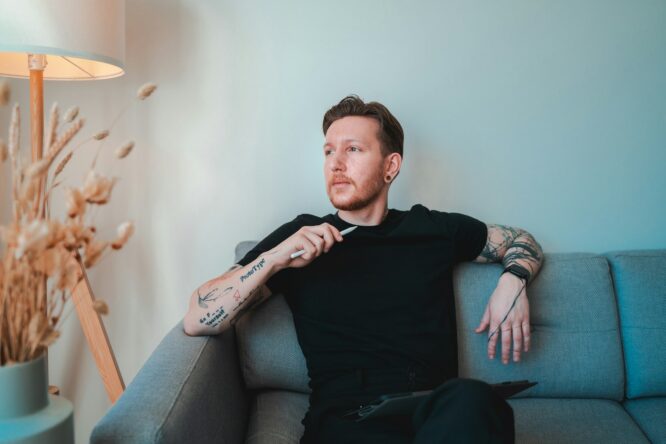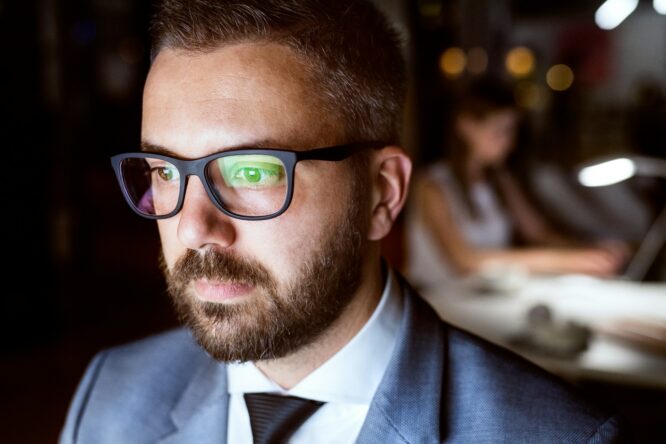Creativity isn’t just about talent—it’s about daring.

Every great idea, bold project, and exciting leap forward usually started with someone willing to take a risk, even when the outcome was far from guaranteed. Unlocking your creative potential isn’t about waiting for the perfect idea to fall into your lap; it’s about being brave enough to try, stumble, experiment, and keep moving. Some risks are loud and public, while others are quiet and deeply personal. However, they all open doors you wouldn’t find otherwise. Making these moves can help you tap into deeper creativity by stepping outside your comfort zone and saying yes to a little more risk.
1. Make something without worrying who will see it.

When you create purely for yourself, you remove the pressure to impress or be perfect. It’s one of the quickest ways to reconnect with the playful, experimental side of creativity that often gets buried under expectations and performance anxiety. When you’re not worrying about an audience, you’re free to take bigger swings and try ideas that feel strange, bold, or personal.
Living creatively starts when you give yourself permission to make messy, weird, wonderful things not because they’ll go viral or get praise, but because making them matters to you. That’s where the real magic starts: in the space where no one’s opinion but yours matters.
2. Start before you feel ready.

If you wait until you feel fully confident, you’ll miss half the best ideas. Creative breakthroughs often happen when you’re still figuring things out, when you’re awkwardly fumbling and making it up as you go. Waiting for the perfect moment is just fear in disguise, and it’s a comfortable excuse that keeps you safely stuck.
Risk-taking means starting before all the lights are green—trusting that you’ll build the skills, connections, and inspiration you need along the way, not before you even begin. Confidence grows from action, not the other way around.
3. Share something you’re proud of, even if it’s imperfect.

Putting your work into the world, flaws and all, can feel terrifying. However, it’s also one of the fastest ways to grow. Every time you share something, even if it’s not perfect, you flex the muscles of vulnerability, courage, and resilience—the exact muscles you need to sustain a creative life long-term.
Creativity isn’t about producing flawless work. It’s about connection, and connection happens when you’re brave enough to show up authentically, not just when you think you’ve nailed it. The imperfect parts are often what people relate to most anyway.
4. Try a medium or style that feels totally unfamiliar.

If you’re a writer, try painting. If you’re a musician, try learning photography. Stretching into a new medium shakes up your brain in ways that staying in your comfort zone never could. It disrupts your patterns and forces you to problem-solve differently.
The goal isn’t mastery; it’s stimulation. Sometimes you won’t even realise how stuck you’ve got in old habits until a totally new format jolts you awake and reminds you how many ways there are to express yourself.
5. Let yourself make “bad” work on purpose.

Perfectionism is creativity’s worst enemy. Risk-taking often means being willing to make things that don’t look polished, that feel awkward, or that make you cringe a little when you look back at them. That’s part of the deal.
Some of your best ideas will be hiding inside the work you were scared to make because it didn’t feel impressive enough. Give yourself full permission to be terrible sometimes. It’s weirdly freeing, and often the stepping stone to the truly brilliant stuff you wouldn’t have reached otherwise.
6. Collaborate with someone very different from you.

Creativity feeds off new perspectives. Partnering with someone who thinks, works, or dreams differently than you can jolt your imagination into places you wouldn’t have found alone. It stretches you, challenges you, and often surprises you.
Collaboration is a risk because it means giving up a little control. But it can also spark entirely new directions you didn’t even know you needed until someone else opened the door. Creativity is contagious when you’re willing to let it be messy and shared.
7. Enter contests or challenges just for the experience.

Whether it’s a writing competition, an art challenge, or a weekend hackathon, entering something just for the fun of it stretches your creative risk muscles. It shifts your focus from “being perfect” to “finishing and showing up,” which is often exactly the nudge you need to push past perfection paralysis.
It’s not about winning; it’s about building momentum. Sometimes a simple prompt, a random deadline, or a playful challenge is all you need to break through a creative rut and surprise yourself with what you’re capable of.
8. Take a break when you’re stuck without feeling guilty about it.

Sometimes the bravest move isn’t pushing harder; it’s stepping back. Creativity needs breathing room. When you’re stuck, taking a real break—not just doom-scrolling but truly stepping away—can feel risky because it forces you to trust the process, not control it.
Letting go for a little while often brings fresh insights you can’t find by hammering away. Trust that stepping back doesn’t mean the work has stalled; it just means it’s marinating underground, getting ready for a new breakthrough you couldn’t have forced.
9. Ask questions that don’t have easy answers.

Creative breakthroughs rarely come from following the obvious path. Risking asking bigger, harder questions—the ones that make you rethink your assumptions or stare into uncertainty—can open up completely new possibilities you’d never reach through surface-level thinking.
It’s uncomfortable to sit with big questions without rushing to answer them. But living in that discomfort, allowing it to simmer and stretch you, is often where the richest ideas are born.
10. Say yes to small things that scare you.

You don’t have to blow up your life to unlock more creativity. Sometimes it’s the little yeses—trying a new class, emailing someone you admire, performing a rough draft—that build your courage as time goes on.
Each small yes strengthens your bravery muscles. Over time, the risks that once felt huge start feeling like normal parts of a bigger, braver life. Creativity expands naturally when you start normalising fear instead of avoiding it.
11. Let real life inspire you, even the boring parts.

Big creative ideas aren’t just hiding in art galleries and brainstorm sessions. They’re hiding in the tiny, overlooked details of everyday life—the awkward interactions, the funny coincidences, the bittersweet moments no one else even notices.
Training yourself to stay present enough to catch them is a quiet, underrated kind of creative risk. It requires slowing down, paying attention, and trusting that your own life is enough raw material for incredible work.
12. Accept that some people won’t get it, and create anyway.

Not everyone will understand your creative choices. Some people might criticise, dismiss, or misunderstand what you’re trying to do, and if you let that fear call the shots, you’ll start shrinking without even realising it.
Part of unlocking your creative potential is making peace with being misunderstood sometimes. What matters most isn’t universal applause; it’s staying true to your own weird, specific, beautiful vision, even when it feels vulnerable to do so.
13. Build your creative life for the long haul, not just quick wins.

Risk-taking isn’t about one big dramatic leap. It’s about showing up again and again—experimenting, failing, learning, and building something meaningful over time. It’s about playing the long game with yourself and your dreams.
Creativity deepens the longer you stay in the arena. Trust that every tiny risk you take now, even if it doesn’t seem to pay off immediately, is building a foundation for a bigger, bolder creative life than you can even fully imagine yet.




